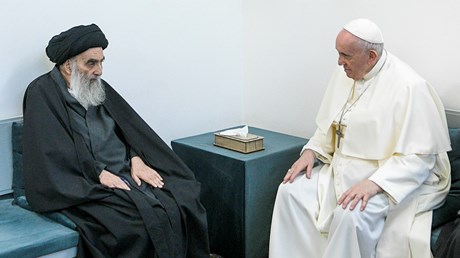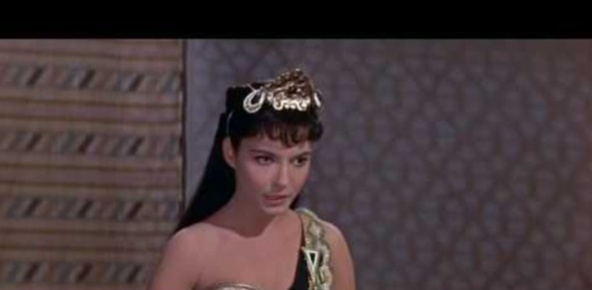Supporting struggling Christians, historic papal visit reveals the diversity and rivalry within an Islamic clerical tradition best known for theocracy.

Pope Francis, a “pilgrim of peace” to Iraq, has made history by becoming the first pontiff to meet a grand ayatollah: Ali al-Sistani, whose hawza (seminary) in Najaf, 100 miles south of Baghdad, is considered the foremost center of learning in Shiite Islam.
Two years ago, the pope met the grand imam of Egypt’s al-Azhar, considered the foremost center of learning in Sunni Islam. With Ahmed al-Tayyeb, Francis signed the “Declaration of Human Fraternity,” calling on both Christians and Muslims to embrace religious diversity with freedom and respect.
This weekend, Francis came to Iraq to support and encourage the nation’s beleaguered Christians, whose numbers have decreased from 1.4 million in 2003 to about 250,000 today.
But he also wished to sign a similar document with the reclusive leading figure in Shiite Islam, which represents 1 in 10 of the world’s Muslims—yet 6 in 10 Iraqis.
The result with Sistani was more modest than with Tayyeb, but Francis did secure a very important fatwa (religious ruling).
“[Christians should] live like all Iraqis, in security and peace and with full constitutional rights,” said Sistani in an official statement. “The religious authority plays [a role] in protecting them, and others who have also suffered injustice and harm in the events of past years.”
Francis removed his shoes upon entering Sistani’s modest home. And while the ayatollah usually sits to receive visitors, he stood to welcome the pope.
Will the ruling make a difference? Will it have any impact in Iran, the neighboring theocratic Shiite state? And what really drives the conflict: religion or politics?
In Muslim history, the answer is both.
While differences exist ...
from Christianity Today Magazine
via




.gif)

.gif)
.gif)
